What Is The Commodification of Content? And Is It Counterproductive?
The commodification of content, as with the commodification of everything, begins with monetisation. And the definition of ‘commodification’ is “the action or process of earning revenue from an asset, business, etc.”
In recent years, the monetisation of personal data has proven that anything can be monetised—from virtual currencies and NFTs (Non-fungible tokens) to unusual items you’d be forgiven for assuming couldn’t be sold at all.
Our favourite examples of weird and wonderful monetised items include a woman’s mess (an installation made of rubbish and leftovers, selling for a whopping $4 million) and an imaginary painting. That’s right, a painting called “Fresh Air” sold for $10,000, despite existing solely in the artist’s imagination.

It is difficult to say when content—as in, the written word—was first monetised. However, the earliest known written texts date back as far as 2000-1700 BC. Though whether these texts were monetised in any way isn’t particularly clear.
At the very least, we can certainly say that books have been monetised for centuries. Since the dawn of the internet, however, we’ve seen the emergence of a new breed of written content; digital content.
Arguably, digital content carries the weight of a great many more purposes than other types of content. While a book exists largely for its own sake, with enjoyment of the book more or less directly correlating to how lucrative the content is, digital content has become so corrupted by algorithms that it functions increasingly as a means to an end.
Yes, there remain many B2B written content creators who write with integrity, satisfying the algorithm as best they can without allowing that focus to dilute their attention to content quality.
But when ranking often feels like the most challenging and most essential ambition for digital B2B content creators, the temptation to let content quality fall to the wayside becomes almost irresistible.
The Difference Between Monetised & Commodified Content
In the realm of digital content, monetised content can quickly become commodified content. In fact, this is increasingly apparent year on year, which is in part responsible for Google’s continuous algorithm updates. But it could be argued that in their attempts to make content quality a crucial factor in determining ranking, the Google team’s updates are in fact counterproductive.
For more on how the Google algorithm is killing content quality, keep an eye out for an upcoming article. In it, we’ll examine how the search engine’s inability to effectively judge content quality requires it to rely heavily on other factors, pushing quality to the bottom of its list of priorities. This has a knock-on effect on the marketing industry by creating a ranking-centric approach that dilutes, or entirely eliminates, investment in and dedication to content quality.
What is Commodification?
As we’ve already touched on, content has been monetised, in one form or another, for centuries. But in recent years, the digitalisation of content has resulted in content commodification. Which is particularly pertinent to B2B content creators using written content as part of their SEO and content marketing initiatives.
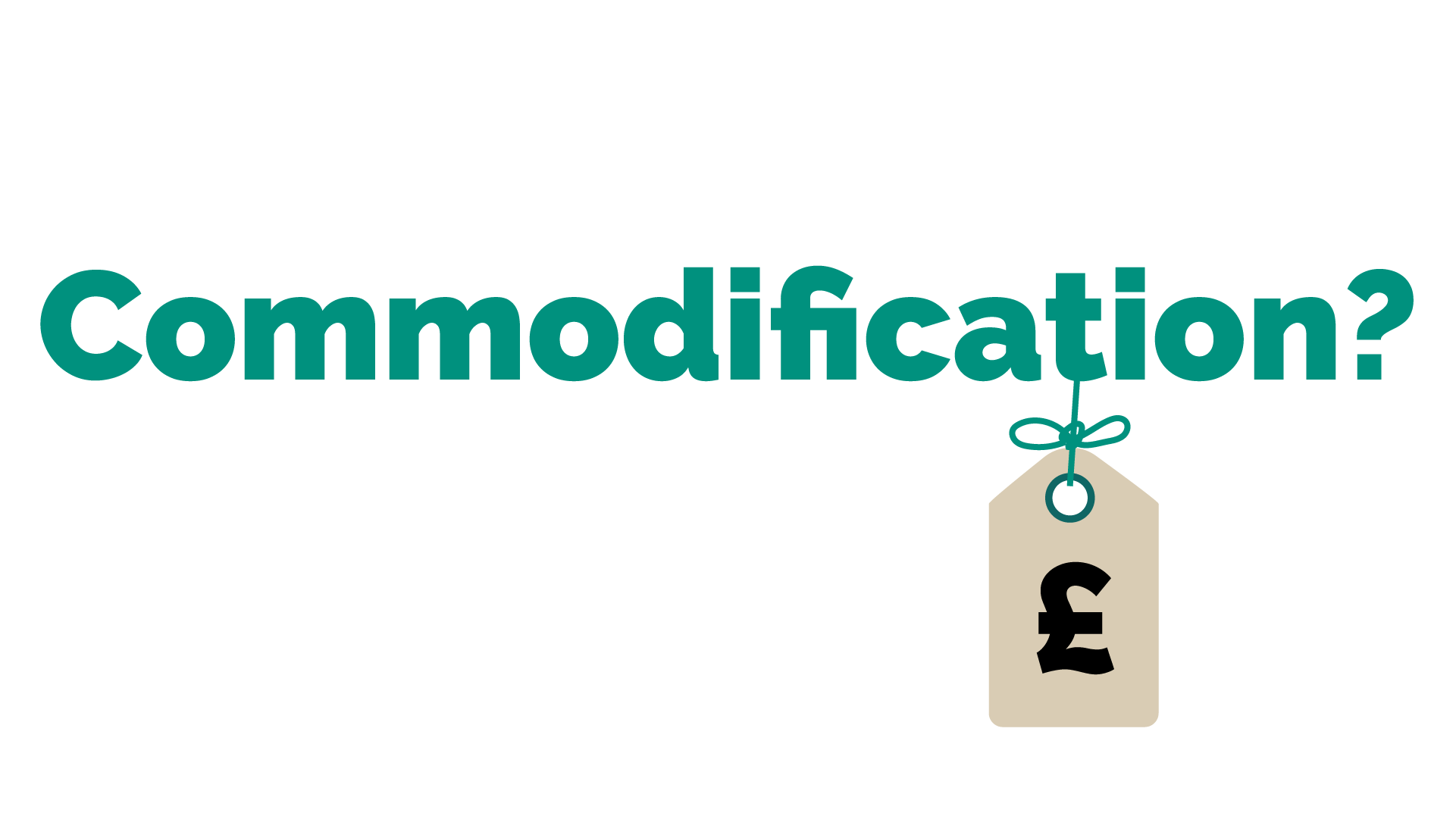 Commodification is defined as: “the action or process of treating something as a mere commodity”—emphasis on ‘mere’.
Commodification is defined as: “the action or process of treating something as a mere commodity”—emphasis on ‘mere’.
In other words, commodification implies that the value of a thing, whether a physical deliverable or idea, diminishes to the point that it solely represents its merit and utility as a sellable item.
And in the world of content, where originality and creativity provides intrinsic value beyond sellability, commodification poses a major problem. A major problem for both B2B content creators and consumers.
How Has the Digitalisation of Content Increased Commodification?
Let’s highlight the problem of commodification in the digital content industry with a comparison between digital and print content mediums.
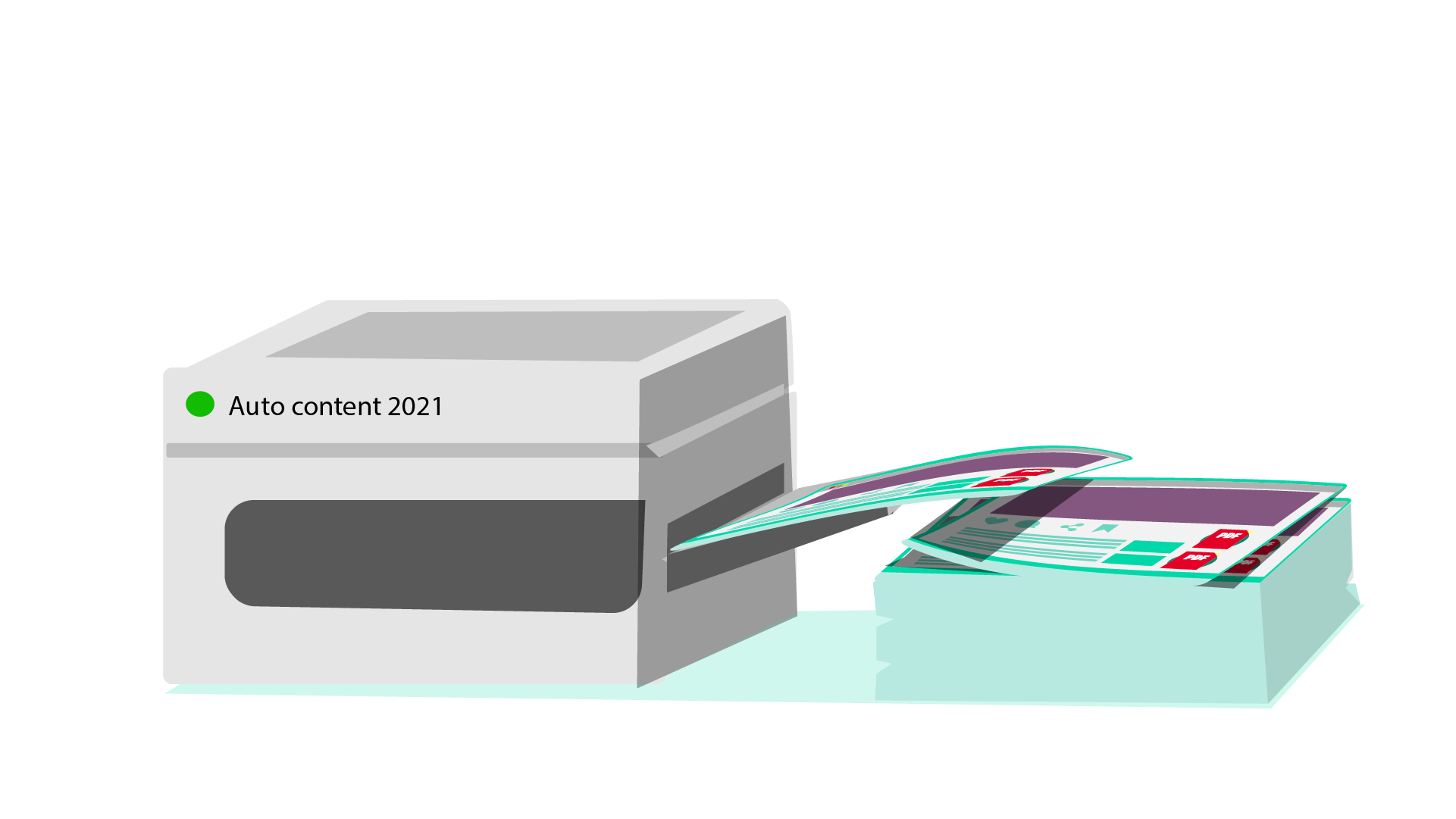 We have all read content on a blog or website that provides nothing of real, original value. For example, the “Top Tips” and “Best Of” lists which are often generic and unoriginal. You’ve read them elsewhere and despite actively looking for new information, you find yourself sifting through pages of the same ideas.
We have all read content on a blog or website that provides nothing of real, original value. For example, the “Top Tips” and “Best Of” lists which are often generic and unoriginal. You’ve read them elsewhere and despite actively looking for new information, you find yourself sifting through pages of the same ideas.
Don’t believe us? Try searching for basic information, like “best marketing tips”. Click on the top three results and you’ll soon realise how little variation there is between them.
In print media, such as the book publishing industry, replication of this nature is a no-go. Books maintain an intrinsic value beyond their sellable worth. The industry’s barriers to entry require that each book’s value surpasses the amount paid for it, which in turn safeguards the industry itself in the long term.
I’m sure the vast majority of us can agree that a good book is worth a great deal more to us than the £8 to £10 we spend on it.
To make it to market and be a success, books must be: original, bring something new to the table, and be market and audience-appropriate.
The systems of content production in the publishing industry require and ensure that quality of content directly corresponds to sellability. And this defends books, as the product of the publishing industry, against a reduction to a mere commodity.
Unfortunately, the same does not apply to digital B2B written content.
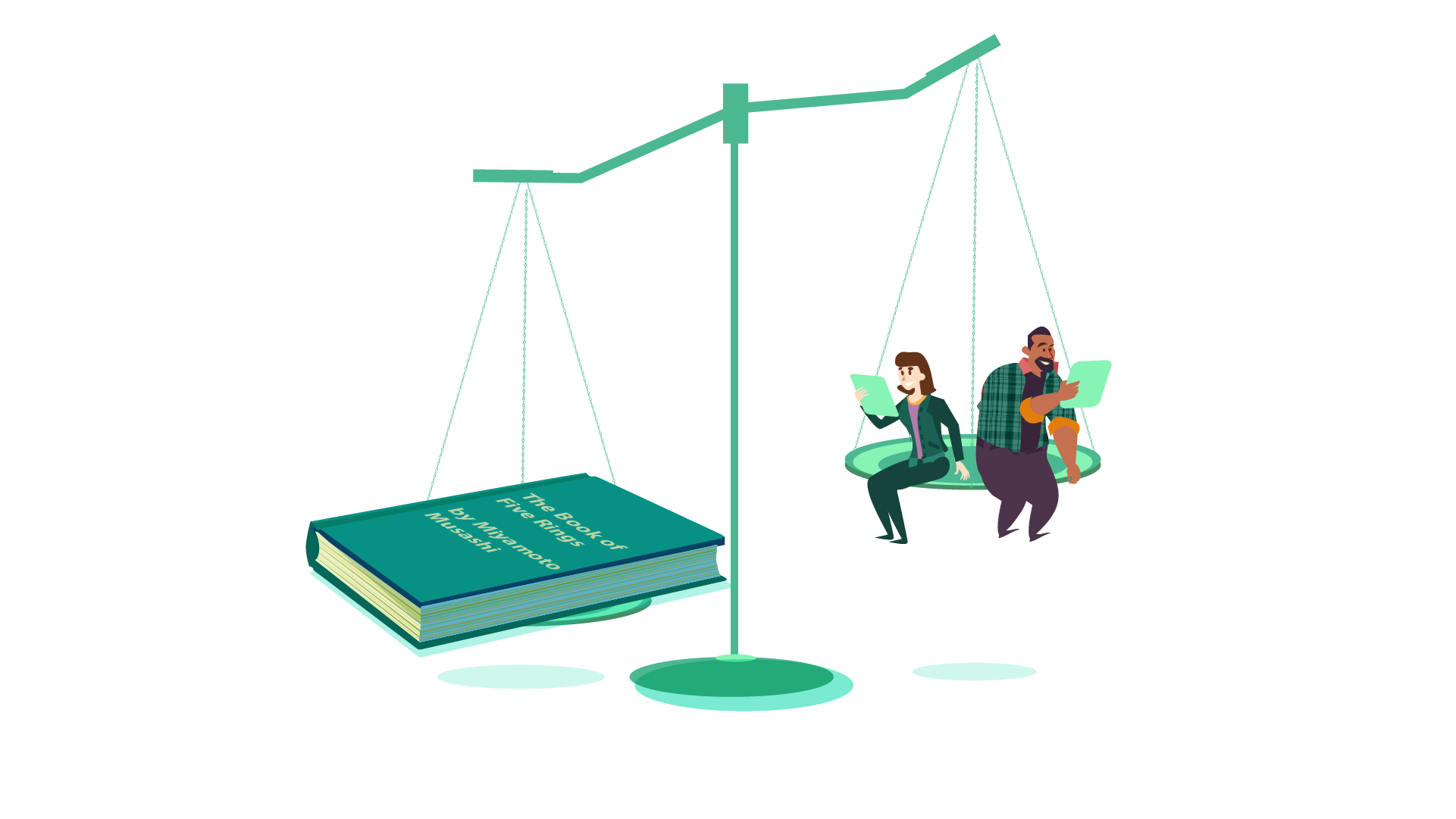
Barriers to entry are too minimal to prevent replication and generic content. While the need to rank surpasses the importance of the content’s quality for many creators and business owners. As a result, content simply has to be good enough to avoid becoming a deterrent to site visitors.
Put simply, in book publishing (generally speaking) the better the book, the better it sells.
In digital content creation, the best content doesn’t necessarily get the best visibility or the most success. There are too many other factors at play, diluting the correlation between quality and success in such a way that does not apply to print publishing.
The end result is a sea of online content with no regulation where quality is secondary.
How Much Of A Problem Is The Commodification of Content, In Real Terms?
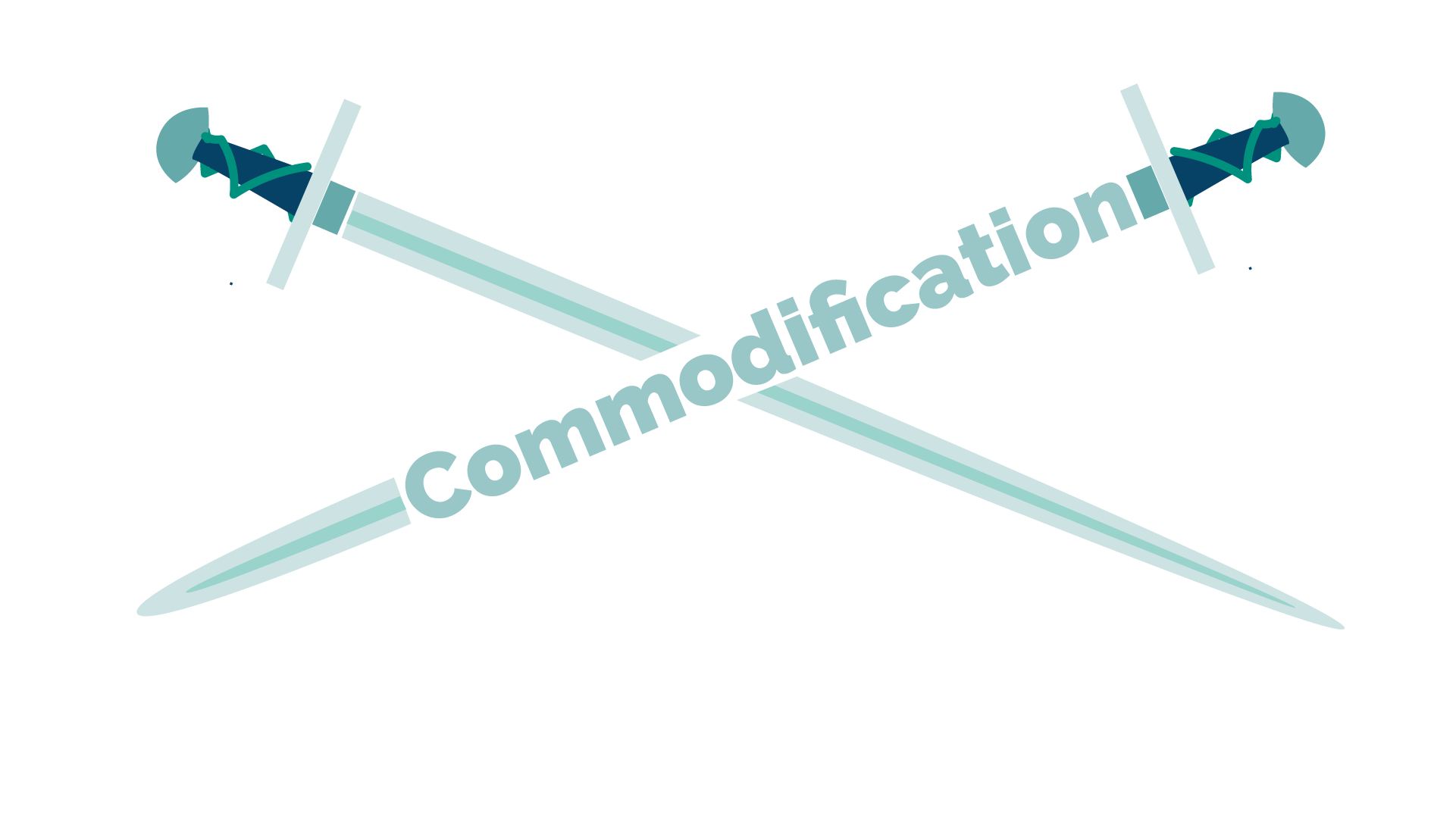
The answer to this question very much depends on your position; if you are a B2B content creator (or a business owner outsourcing B2B written content creation), commodification is likely to be a double-edged sword.
On the one hand, creating content is reasonably simple in a hyper commercial and digital environment, because originality isn’t a prerequisite.
That means less planning time, less talent, and less money spent on copywriters who specialise in your subject area. You can outsource the whole program, at scale.
On the other hand, when one does create genuinely original and thoughtful content, it can feel very unjust when it fails to rank against a generic competitor or is then replicated and published elsewhere.
In many cases, the content ideas have been duplicated, but word choice and order has been altered, which effectively means that nothing can be done by the original creator—even if they did have the resources and inclination to take legal action.
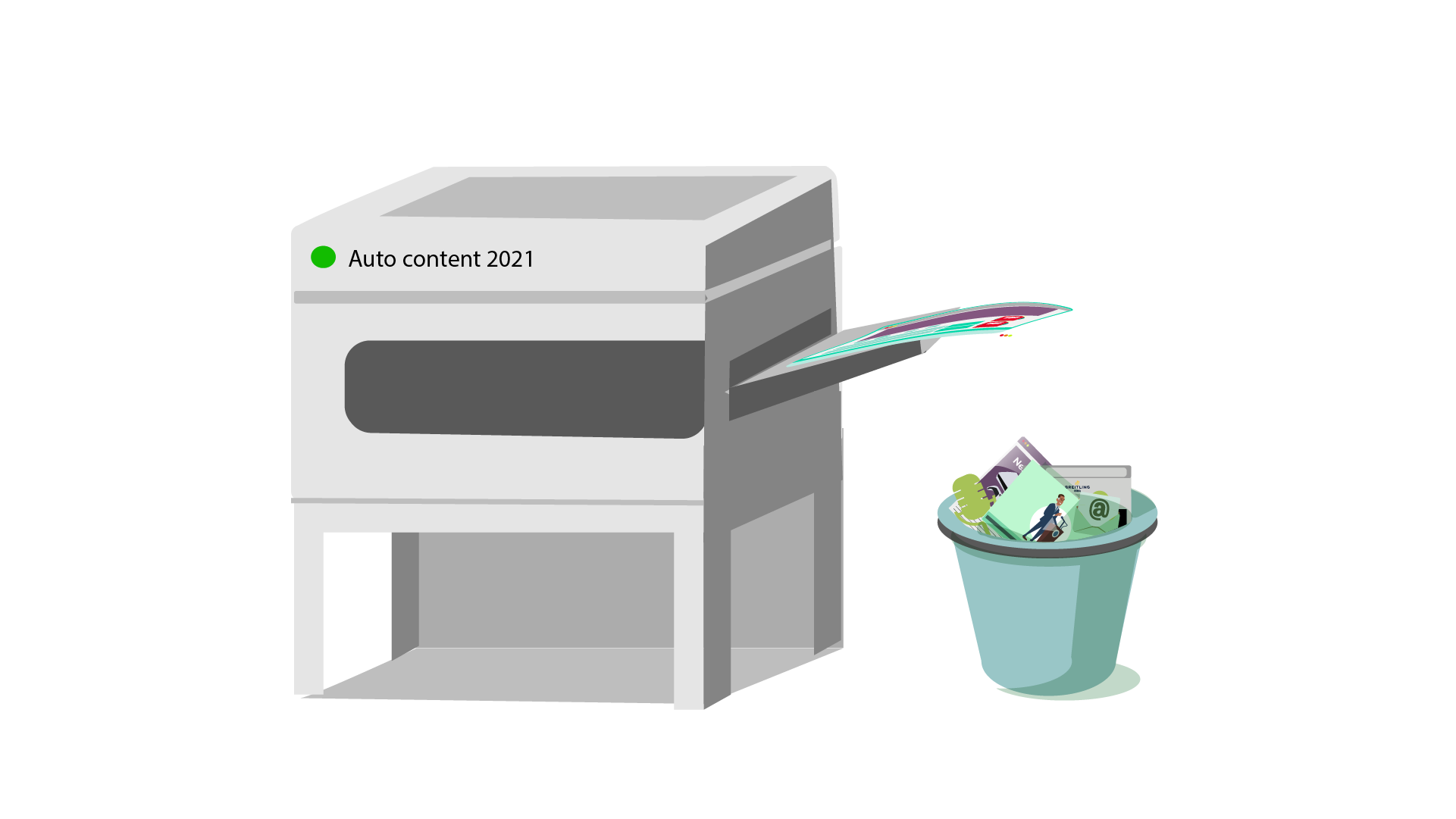 Given that the original creator is so vulnerable to having their work replicated, is it any wonder that creators and business owners alike feel so disinclined to invest any more than necessary in their content?
Given that the original creator is so vulnerable to having their work replicated, is it any wonder that creators and business owners alike feel so disinclined to invest any more than necessary in their content?
This in turn feeds the very system which they rile against.
The Authority Bias
Authority online is another factor that determines how a B2B content creator or business might be affected by content commodification. Consider a start-up with a very small team as an example. They don’t have much of a presence online, but they are committed to creating original, thought-leadership content.
They publish an exceptional article to their site, only to discover that it has been replicated and published elsewhere a month later, by a company dominating their industry’s market share. Though it’s clear the competitor has replicated their ideas, they’ve changed the wording to avoid outright plagiarism. Not only is this next to impossible to contest, but would likely fall on deaf ears if this small start-up were to try.
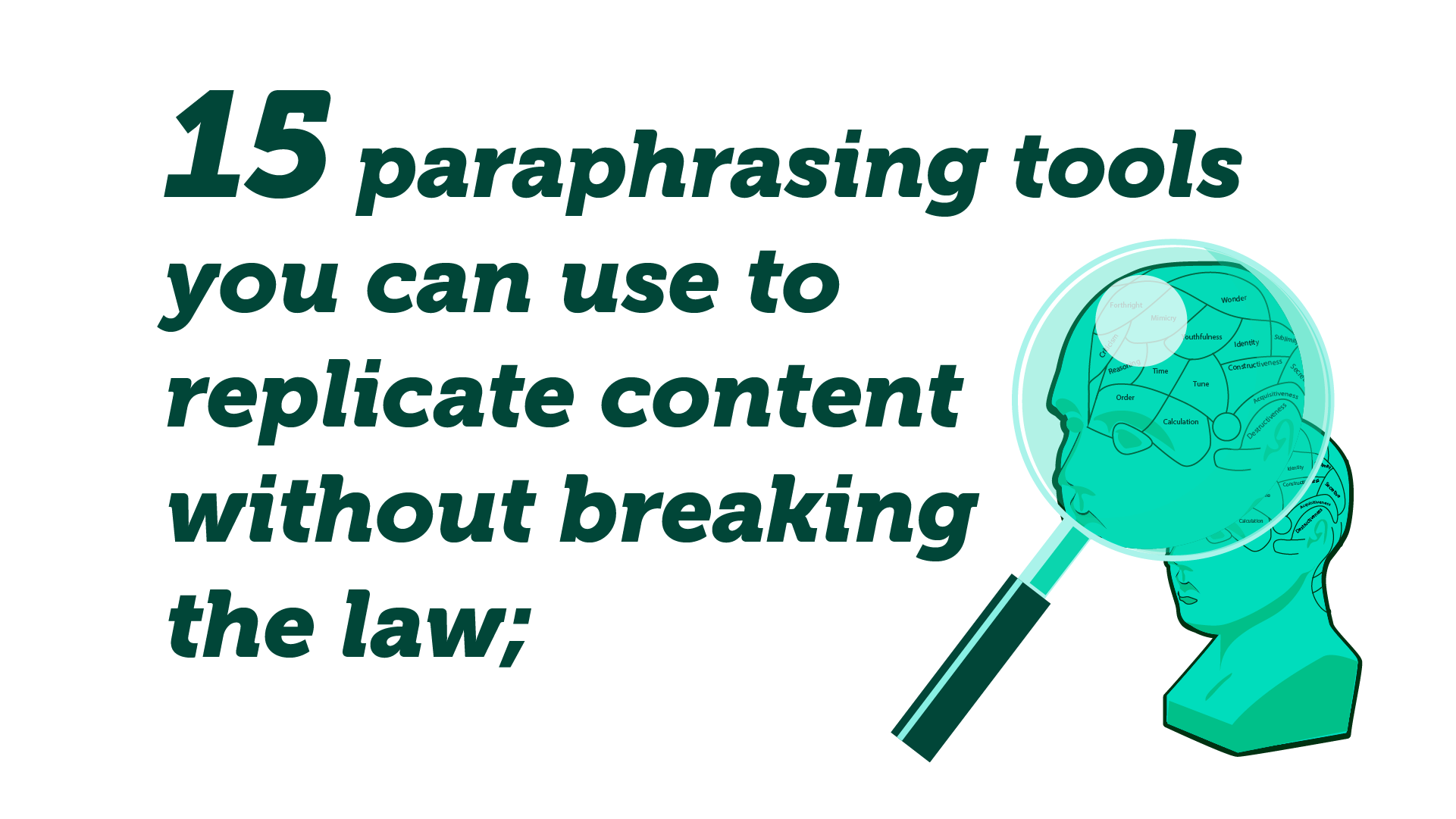 You might be thinking that this kind of behaviour is an anomaly. You’d be wrong. This practice is so widely accepted that LinkedIn have even published an article listing 15 paraphrasing tools you can use to replicate content without breaking the law; as if stealing someone else’s ideas wasn’t easy enough, now there are tools to make it even easier!
You might be thinking that this kind of behaviour is an anomaly. You’d be wrong. This practice is so widely accepted that LinkedIn have even published an article listing 15 paraphrasing tools you can use to replicate content without breaking the law; as if stealing someone else’s ideas wasn’t easy enough, now there are tools to make it even easier!
What About Readers?
There is an avalanche of content out there, constantly flooding through daily, all of which is trying to ensnare reader attention.
Our brains are designed to sift through information, but with the sheer volume available to us now, our minds categorise content into just a few categories:
- Attention-grabbing, low-involvement content (i.e., cat videos)
- Noise; as in, everything that requires attention, but isn’t necessarily relevant
- Relevant, but suspicious (i.e., looks either fake, too good to be true, or self-congratulating)
- Good, consistent, and trustworthy; this is the content that readers will absorb and return to when required
For readers, effectively separating quality content from generic content is a real challenge. To use an analogy, this is like trying to hear the person beside you. Except you’re in a crowded room of shouting people all vying for your attention.
Google understands this. As a result it takes less risks, prioritising those who are already ahead in the game over new quality content, and thereby increasing the entry point to success.
This is why consistent quality becomes important, but this does of course take time, effort and money. You have to be completely in it, or not.
Of course, this goes against the commodified content model; where to create generic content as cheaply as possible is the key aim.
There is an avalanche of content out there. It’s constantly flooding through daily, all of it attempting to ensnare reader attention.
How the commodification of content affects creators
The commodification of written B2B content also has implications for the creators responsible for writing content.
Many content creators are paid by the word. Which one could argue establishes a dynamic in which—once again—quality can easily become secondary to financial gain.
Rather than their rate of pay matching the quality of content, content creators are will more often than not take a quantitative approach to their income; the faster they write, the more money they make. And the inclination to rush their work results in a natural decline in quality.
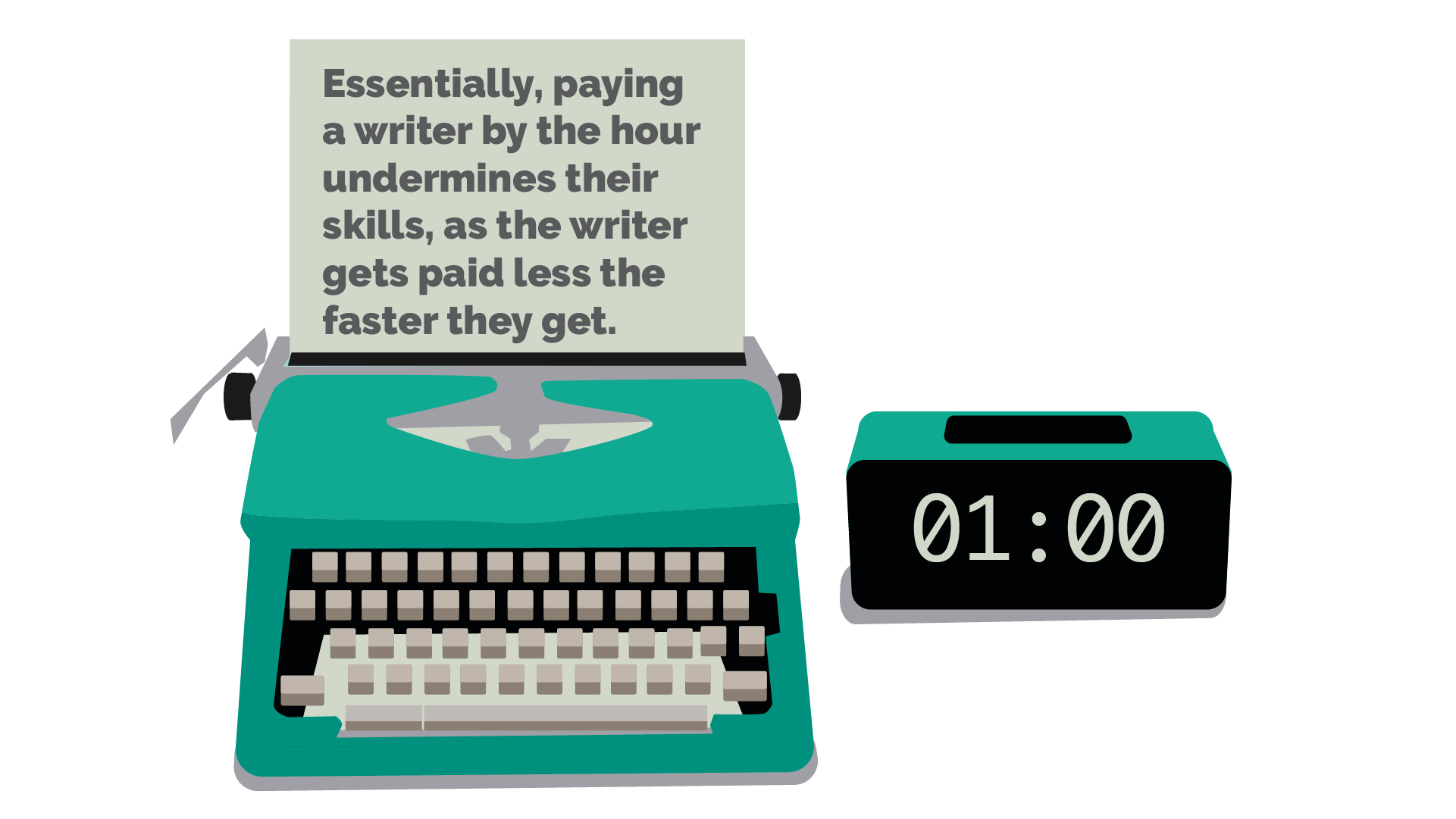
There are of course other payment models available; per hour and per project, for example. Sadly, neither of these models are free of problems. As an article published on Copywriters.com rightly points out, “An hourly rate distorts the true value of the writer. Essentially, paying a writer by the hour undermines their skills, as the writer gets paid less the faster they get.”
More experienced and proficient writers will have a faster turnaround time. Effectively, this means that top writers receive less pay by the hour than inexperienced writers just starting out.
Lastly, we have flat-rate or per project payment models. The key disadvantage of this model is that it requires both the content writer and their employer to agree on how much work a project will require. For writers, this can be quite problematic. Though they can hazard a guess, this is a fine art in and of itself. They are likely to discover that the research necessary to complete the project to a high standard is significantly more than they were first told or they first anticipated.
It suits the buyer to underestimate work so they pay less. And it suits the writer to overestimate work so they make more money. This dissonance of perspectives can cause strife. Ultimately, underestimation of work will inevitably result in a lower quality. Because this is one of the only ways for the writer to safeguard the value of their time.

You may be thinking that these same issues apply to many other digital content creation mediums, such as web development or graphic design. The difference is that, in this current climate, it’s easy to massively undervalue content.
This is in part because content writers are so readily available, though not necessarily appropriately qualified. But this is also the consequence of its increasing commodification; as content is a means to an end for many businesses hoping to bolster their SEO efforts. As a result, employers have little incentive to pay anymore than is absolutely necessary for written content.
These fundamental problems have created a cycle in which content writers are discouraged from labouring over quality, which then perpetuates a system that requires content to simply be good enough, but no more, to compete.
The Opportunity
We are, of course, speaking generally. There are always exceptions to the rule. And in the case of B2B written content creation, we believe that being among the few who swim against the flow can be an advantage.
But doing so requires two things that are in drastically short supply in the world of online content; resolve and persistence.
It takes real determination and graft to recognise all of the problems raised by B2B content commodification, particularly for creators, and still pursue a quality-centric creation strategy. When face-to-face with the possibility of your efforts going nowhere or experiencing duplication, deciding to take another path isn’t easy. There are very few short-term incentives for doing so.
As the old adage goes, “If you can’t beat them, join them.”
 But that’s how the cycle of commodification perpetuates itself. Around and around it goes, discouraging creators from expending any more effort than absolutely necessary, all the while guaranteeing that digital B2B content becomes more commodified and less intrinsically valuable by the day.
But that’s how the cycle of commodification perpetuates itself. Around and around it goes, discouraging creators from expending any more effort than absolutely necessary, all the while guaranteeing that digital B2B content becomes more commodified and less intrinsically valuable by the day.
So, what do we propose?
Be the wrench in those gears, grinding the bullish system to a halt by focusing on quality written content and understanding that you are in it for the long haul.
Yes, in the short term, you may see your content duplicated.
It can be frustrating when you spend so much time, resource, and funding on content, with very little return.
But when ranking does begin to grow and traffic trickles in, you’ll quickly discover that those early efforts are multiplied.
You will recall that earlier, we stated that the best content doesn’t get the best visibility or the most success. We stand by this. A fact which, like it or not, continues to chip away at incentives to invest in quality content.
But with a combination of other marketing initiatives, you can create visibility for your content. For example, impeccable branding and ongoing customer relationship building. And all without pandering to the algorithm or duplicating the work of others.
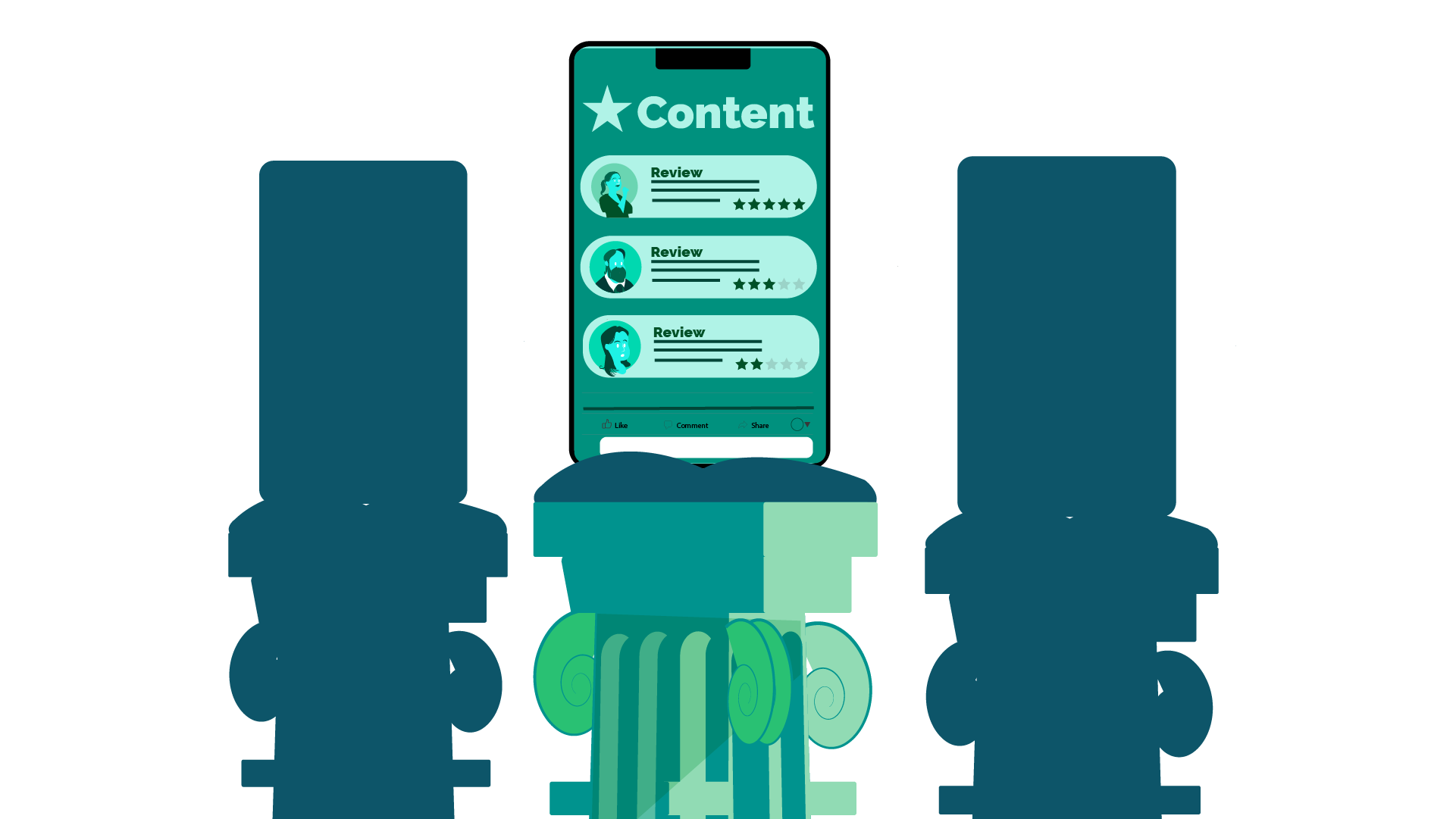
And once you achieve that visibility, your content will stand out among the rest. It will serve the reader, not the algorithm, and when that happens your return on investment will be colossal.
Exceptional B2B content is a key contributor to a business’ conversion rates, so by making quality a priority, you may well find yourself enjoying one of the best conversion rates in your industry.
What next?
How do we change the content landscape of the marketing industry and inspire a renewed commitment to content quality?
It begins with every marketer and business owner choosing quality content over ranking. And that comes from well thought out marketing strategies that utilise content to its full potential. By shifting perspectives and seeing the true value of content, as an art or skill, rather than as a commodification.
And finally, rejecting the perception that content is simply a means to an end.
Only with a long-term plan involving valuable, thoughtful content, will businesses grow a true following. Let’s not forget we’re speaking to humans, not robots. And that in the end, long-term authenticity will win out over short-term spin.
Are you committed to long-term quality content that truly speaks to and connects with your audience? Do you want to fight the commodification of content? And do you want to create genuine value and change the industry for the better? If your answer is “yes” to any of these questions then it sounds like we’d be a great match. Why not get in touch for a free, non-obligation chat.







